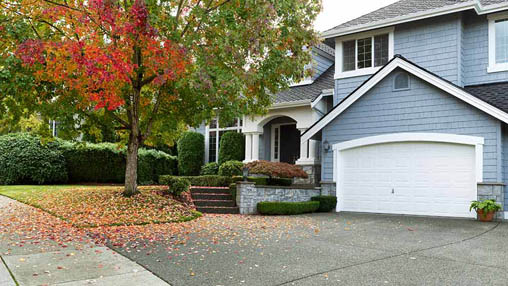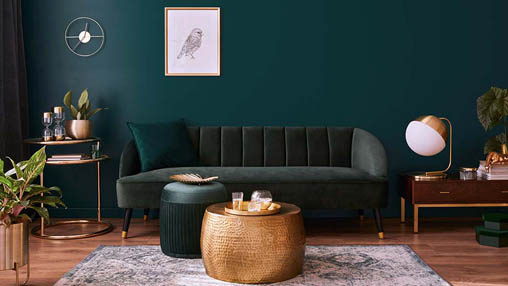
Earn cash back
after close!
With Home Connect, you could earn $350 to $9,500 cash back after close.
“The secret is to conceal, reveal and simplify,” says Eric King, a professional landscape architect based in Atlanta, Georgia who has appeared on HGTV, and is now an instructor for Emory University’s Landscape Design certification program. King refers to improving curb appeal, but this approach can be applied throughout your yard, creating a more attractive landscape that reduces maintenance -- and mistakes. Here are 9 tips on how to bring out the best in your greenery, using a landscaping approach.
- Observe Everything. “Come up with a plan before a shovel goes in the ground,” King says. Understand the yard’s challenges and benefits: sun and shade patterns, soil, erosion issues, healthy plants and how the yard is used. “Maybe there’s erosion, too many weeds, or noise coming from a neighbor’s yard,” he says.
- Conceal Eyesores. To improve curb appeal, play some peek-a-boo. Stand on the sidewalk in front of your house, place your hands over your eyes, then remove – what’s the first thing you see? Where does your eye instinctively go? “Probably to an AC unit, garbage cans, a power transformer or the side of a neighbor’s house,” King says – the least-attractive aspects. To cover, use screening vegetation, preferably a dark green item with a fine or medium leaf texture, and small or medium size needles. Avoid flashy plants, which “act like a giant arrow: do not look here,” King says.
- Reveal Beauty. A front door is the star of the home and yard. “Open up views to the front door with a clear line of sight,” King suggests. “Research plants that grow to 6-8 feet tall making a dramatic impact with color, leaf size or variegated leaves,” he says. As well, clear your home’s view from the bottom of the first-floor windowsills to the gutter. Branches shouldn’t block windowpanes. “Show the house off,” he says.
- Research Plants. Plot before you pot, as every piece of green in your yard should meet a specific purpose with regards to design and requirements, King says. “What does the plant need to accomplish?” King asks -- perhaps providing a splash of color, a spot of shade or a cover for trash? Before heading to the nursery, know your needs: a full-sun-loving evergreen that matures at 6 feet tall, to show off the front door. If your windows’ bottom sill is only three feet off the ground, look up plants that mature to two-three feet tall.
- Chart Smart. “Working out a design for your yard on paper is so much easier than doing it in real life, and less expensive,” King says. Where should the grass be, and where do you want a grouping of showy tulips? Use a crayon or pencil to make big circles that stand in for where those rhodies might go.
- Backyard Scheming. Think of your backyard like a house, with rooms serving different purposes. A lawn might offer a great room, a patio serves as a second living room, and a grilling station can replace your kitchen, with hallways (paths) between each. Offer a strong focal point, much like a living room’s fireplace – in this case, benches and birdbaths. Then, build a landscape around the dominant element, to increase comfort and social connections.
- Smart-Size Plants. “Start small as you can, if you’re not in a hurry” he says. “Plants grow.” Builders and homeowners often try to hurry along a landscape’s mature look by choosing large plants, which can be costly upfront and require weekly pruning, later. Patience means you’ll be able to buy more plants for less. Follow the plant tag spacing guide, although there may be a temptation to crowd small plants.
- Simplify Flora. A nursery addict can be her own worst enemy. “Plant lovers think everybody loves plants,” King says, and often end up forcing favorite perennials into an ill-advised space, or setting out a hundred blooms with varying colors, textures and shapes in a front yard, competing with the house for appeal. “Don’t show off how many types you can buy at nursery,” he says. Instead, use fewer plants in larger masses.
-
Go Green. “Green is the glue in the landscape plan,” he says, in varying hues. “You can’t go wrong with green,” King says, so don’t worry about layering a dark green shrub against a light green house or lawn. Use splashes of color sparingly, “like lipstick,” King says, by the front door or front of the house.
Otherwise, think big, sweeping lines and strong curbs with tidy grass, simplifying the look of your home, and your hours spent on landscape maintenance. You’ll spend more time this summer enjoying your easy-care landscape, and less time (and money) working.
Share
Categories



